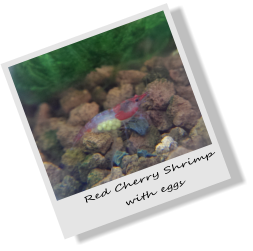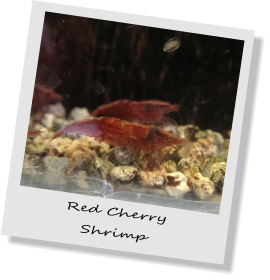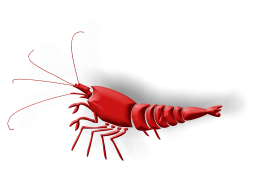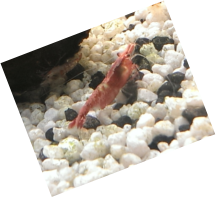

Red (striped) cherry Shrimp
Caring & Breeding Red Cherry Shrimp
Description: Neocaridina davidi var. red or cherry shrimp is a variety of freshwater shrimp from Taiwan which is commonly kept in aquariums. The natural colouration of the shrimp is green-brown, however the red morph is more frequently sold. The density of coloration on adult shrimp, dependent on breeding, determines their sale price and "quality" (grading). This "quality" is purely aesthetic, as the size, behavior and other characteristics of the animal is more or less equal across varieties. Full-grown cherry shrimp reach about 4 centimetres (1.6 in) long. They prefer clean water, with a pH of 6.5-8, and a temperature of 14–29 °C (57–84 °F) They are most comfortable at 22 °C (72 °F). Cherry shrimp are omnivores that may live 1–2 years. These shrimp have previously been classified as Neocaridina heteropoda and Neocaridina denticulata sinensis, however are now known as Neocaridina davidi which is based on the oldest known published description of the species. Appearance: Shrimp entire body is coloured red. Shrimp is fully colored at maturity. (around 5 months) Feeding: Omnivore with majority of vegetable content. Overfeeding of protein can cause health issues. Shrimp will feed on tank algae, algae waffels , boiled (baby) spinach leaves , paprika , and almost anything you thrown into the aquarium. Nitrite 0ppm Nitrates should always be as low as possible. Ammonia 0ppm As with nitrite, ammonia should always be 0 post cycling. Breeding: Breeding red cherry shrimp is as easy as putting an adult male and female together in an aquarium.Eggs may be observed developing in the female's ovaries as a green or yellow triangular "saddle" marking on her back. When she is ready to lay the eggs, which occurs after moulting, she releases pheromones into the water to signal her availability to males. The male shrimp in the tank will often become agitated, swimming very actively about as they search for the source of the pheromones. After a brief mating process, during which the male deposits sperm onto the female's body, the female lays her eggs and affixes them to her swimmerettes. The eggs are not fertilized within the female; they are fertilized as they pass from the ovaries to the outside of the body. Therefore, it is certain that any shrimp carrying eggs has mated. A female carrying eggs under her abdomen is said to be "berried". Some report that young female shrimp carrying their first clutch of eggs tend to drop some or all of the eggs, possibly due to inexperience or small size.if a berried shrimp is stressed by predators or poor water conditions she may also abandon the eggs.[7] They have 20–30 eggs, which take 2–3 weeks to hatch. The eggs are green or yellow, depending on the colour of the saddle. They turn darker and darker until the young shrimp hatch after about three weeks. As the eggs near the end stages of growth, tiny dark eye spots of the developing shrimplets within can be observed. When the young hatch, they are tiny (~1 mm) copies of the adults. They have no planktonic larval stage. They spend their first few days of life hiding among plants or stones, where they are almost invisible, nibbling on the biofilm on the plants. They then emerge and graze on algae on tank surfaces and ornaments. Female shrimp, under ideal conditions, can breed again within a few days of hatching the previous clutch Tanks mates: Very small fish or shrimp of similar size. Mixing with other neocaridina will deliver mixed offspring and is not recommended. Can be mixed with any Caridina sp. without producing mixed offspring's.When kept in an aquarium, they are easily targeted by fish as potential food. Even fish too small to eat them may harass them and stress them to death, sometimes biting off limbs. Size: Females grow slightly larger than the males . Males 1.5-2cm Females 2-2.5cm Aquarium size: variable Difficulty: Easy Breeding Water parameters: 14-28C Degrees, PH Range 6.5-8, TDS 100-500 Note: Some species of shrimp are know to be able to handle water changes and/or PH swings.But even in these cases the survival rate will be much higher (especially for the shrimp fry) if you are able to keep these level as steady as possible. In case of adding “new/fresh” water try adding it very slow or even dripping it into your tank. You will notice an “explosion” in population and thus more to enjoy!!
